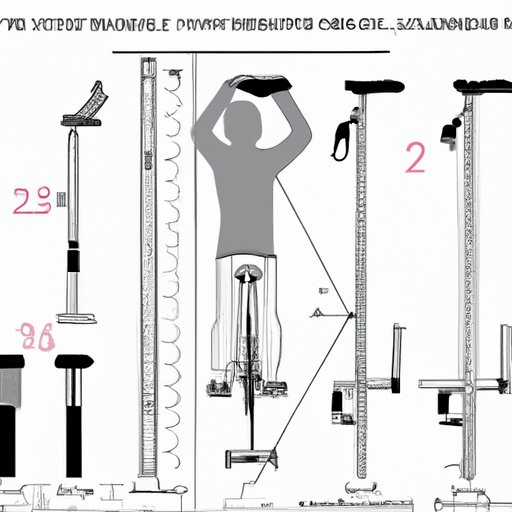Introduction
Bike sizing is an important part of selecting the right bike for you. It is essential to get the correct bike size in order to ensure both comfort and safety while riding. To get the most accurate measurement, it is important to take into account a variety of factors such as frame size measurements, bike fit calculators, top tube length, standover height, rider inseam length, seatpost and handlebar adjustments, and checking the reach of the bike. In this article, we will explore each of these factors in detail so that you can make an informed decision when choosing your bike.

Comparing Frame Size Measurements to Rider Height
One of the most common ways to determine the correct bike size is by comparing frame size measurements to rider height. Generally speaking, the frame size of a bike should be proportional to the rider’s height. However, there are a few factors to consider when making this determination. For example, if the rider is particularly tall or short, they may need to adjust the frame size accordingly. Additionally, some riders may prefer a longer or shorter wheelbase, which can also affect the frame size selection.
Using a Bike Fit Calculator
Another way to determine the correct bike size is to use a bike fit calculator. Bike fit calculators allow riders to input their height, weight, and other measurements in order to get an idea of what size frame and components would work best for them. This is especially helpful for riders who are not sure what size bike they should get. Bike fit calculators are available online and are typically quite easy to use.
Measuring the Bike’s Top Tube Length
In addition to using a bike fit calculator, it is also important to measure the bike’s top tube length. The top tube length is the distance from the middle of the head tube to the middle of the seat tube. This measurement is important because it helps to determine if the bike will fit the rider’s body type. When measuring the top tube length, it is important to keep in mind the rider’s torso length, arm length, and shoulder width. If the top tube length is too long or too short, the rider may experience discomfort while riding.

Evaluating the Standover Height of the Bike
The standover height of the bike is another important factor to consider when measuring a bike size. The standover height is the distance from the ground to the top of the top tube. Generally speaking, the standover height should be slightly more than the rider’s inseam measurement. This allows the rider to have adequate clearance when getting on and off the bike. It is important to keep in mind that the standover height can vary depending on the type of bike (e.g. mountain vs. road).
Taking into Account Rider Inseam Length
In addition to evaluating the standover height of the bike, it is also important to take into account the rider’s inseam length. The inseam measurement is the distance from the floor to the crotch. This measurement helps to determine the proper saddle height, which is critical for both comfort and performance. The rider should be able to comfortably reach the ground while seated on the saddle.

Adjusting the Seatpost and Handlebars
Once the frame size and standover height have been determined, it is time to adjust the seatpost and handlebars. The seatpost should be adjusted so that the rider can sit comfortably and reach the handlebars without having to strain. The handlebars should also be adjusted so that the rider can easily reach the brakes and shifters. It is important to remember that the seatpost and handlebars can be adjusted as needed to accommodate the rider’s body type.
Checking the Reach of the Bike
Finally, it is important to check the reach of the bike. The reach is the distance from the saddle to the handlebars. This measurement helps to determine if the bike is the right size for the rider’s body type. If the reach is too short, the rider may feel cramped while riding; if the reach is too long, the rider may feel stretched out. It is important to make sure that the reach is comfortable for the rider.
Conclusion
Measuring a bike size correctly is essential for both comfort and safety. By taking into account frame size measurements, bike fit calculators, top tube length, standover height, rider inseam length, seatpost and handlebar adjustments, and checking the reach of the bike, riders can ensure that they get the most accurate bike size measurement possible. With the right information and a bit of patience, anyone can find the perfect bike size for their needs.


